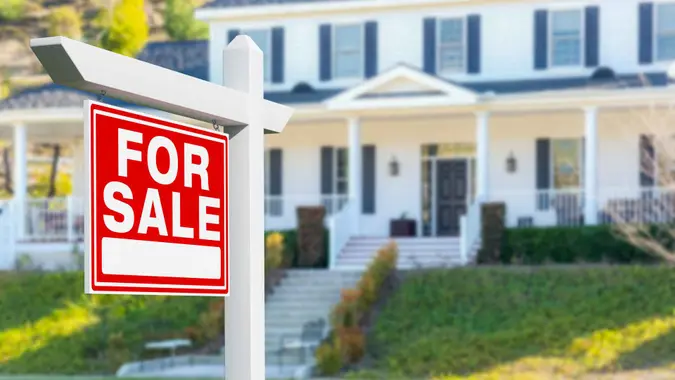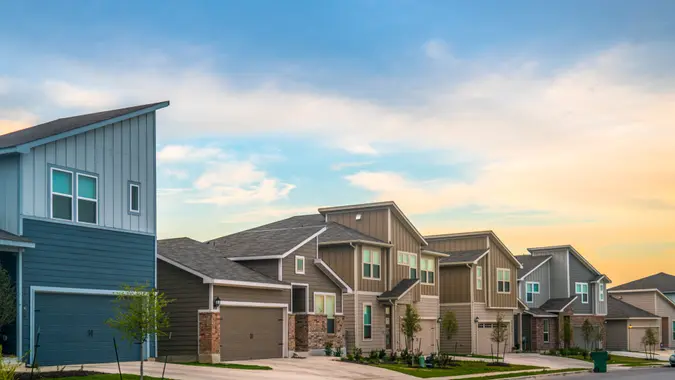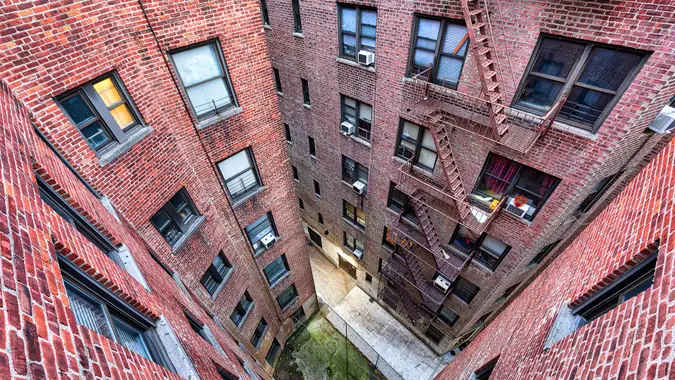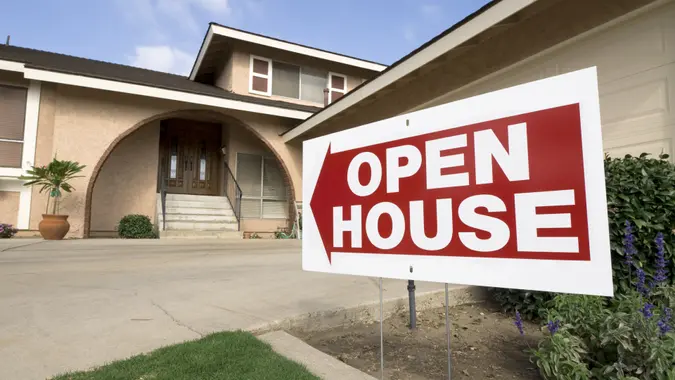I’m a Real Estate Agent: Here Are the 4 Florida Cities Where You Should Avoid Buying a Home

Commitment to Our Readers
GOBankingRates' editorial team is committed to bringing you unbiased reviews and information. We use data-driven methodologies to evaluate financial products and services - our reviews and ratings are not influenced by advertisers. You can read more about our editorial guidelines and our products and services review methodology.

20 Years
Helping You Live Richer

Reviewed
by Experts

Trusted by
Millions of Readers
The average home value in Florida is $392,176, according to Zillow. This is now higher than the national average home value of $359,099, making Florida more expensive than what many Americans can comfortably afford. This is especially true when you factor in high interest rates, homeowners insurance premiums and maintenance.
Still, if you’re thinking about buying a home in The Sunshine State, there are many places worth checking out. At the same time, there are certain cities where you might be better off not purchasing property.
Price is a major factor here, but it’s not the only one. Certain Florida cities also have high crime rates or weather hazards that can cause insurance prices to skyrocket. All of this is important to consider before making your purchasing decision.
So, where should you avoid buying a home in Florida? Here’s what Martin Orefice, a Florida real estate agent and the CEO of Rent To Own Labs, said about the locations to avoid.
Miami
Orefice suggested avoiding the greater Miami area. This includes everything from the Keys to Hollywood.
“The entire area is so thoroughly built up that there’s essentially no new construction to keep prices in check,” he said. “Throw in high property tax rates and the cratering insurance market, and it’s just not worth it, especially for the average homebuyer.”
The typical home value in Miami is $583,030 — up 6.4% over the past 12 months. This is about $223,000 higher than the national average and will price out the average buyer.
“People who can afford the high prices will still find a wonderful place to live,” said Orefice, “but the bottom and middle of the market just aren’t there.”
Boca Raton
Next up on the list is Boca Raton, which is home to about 100,000 people and is located along the state’s southeastern coast. While a beautiful area, the cost of real estate alone might deter the average buyer.
The typical home value is $584,615, a 0.7% increase from a year ago.
“Coastal cities in Florida are becoming increasingly difficult places to own a home. This is especially true of places like Boca Raton,” Orefice said. “While [the] area has lovely beaches, it also has home prices that simply can’t justify the financial risk.”
According to NeighborhoodScout, the crime rate in Boca Raton is also significantly higher than the national average for communities of its size. That doesn’t mean all neighborhoods are unsafe, but it’s worth keeping in mind.
Sarasota
Another coastal area to avoid, according to Orefice, is Sarasota.
Home prices there are lower than what you’d get in Miami, at $447,812. They’ve also decreased by 3.4% over the last year. But the cost of insurance alone could eat into your homebuying budget.
“Homeowners insurance is becoming increasingly expensive in Florida,” Orefice said. This is largely due to the increased climate risk from hurricanes.
According to the Insurance Information Institute, the average annual cost of homeowners insurance in Sarasota is $2,165. The region has historically suffered from less hurricane-related property damage than other states, which is good news, but it can still happen.
Daytona Beach Shores
Daytona Beach and the nearby Daytona Beach Shores are also areas Orefice suggested avoiding.
In terms of property prices, Daytona Beach Shores is above the national average at $408,154. According to Risk Factor, Daytona Beach Shores also has an extreme risk factor, meaning it’s at a high risk of experiencing severe storm winds, hurricanes and tornadoes. That being said, if you head north to Daytona Beach, you could see lower insurance costs and fewer environmental-related damages.
“Your beachfront home is likely to be underwater financially as well as literally,” Orefice said. If you want to lower your insurance risk, you might want to look further inland.
Where To Buy a Home in Florida
When it comes to buying a home, it’s important to consider your own financial situation, goals and needs. While one person might avoid a place like Miami or Sarasota, someone else might find great appeal in those areas.
If you’re looking for other places to buy property, Orefice had some suggestions for where to start your search.
“Orlando, Lakeland and Gainesville all have wonderful Florida weather and zero income tax, and also come with a lot less climate risk,” he said. “The I-4 corridor from Lakeland up to Sanford, anchored by Orlando, is far enough inland to be safe from storm surges, which helps to keep insurance costs somewhat more survivable.”
These areas also have room to grow, he added, so now might be a good time to get in.
Just be sure to consider your own budget, mortgage interest rates, the cost of property taxes, homeowners insurance and maintenance. Check out the area’s crime rate, livability score and opportunities as well to ensure you’re moving somewhere that fits both your budget and lifestyle needs.
Editor’s note: The average home values listed are sourced from Zillow and accurate as of Nov. 22, 2024.
 Written by
Written by  Edited by
Edited by 

























